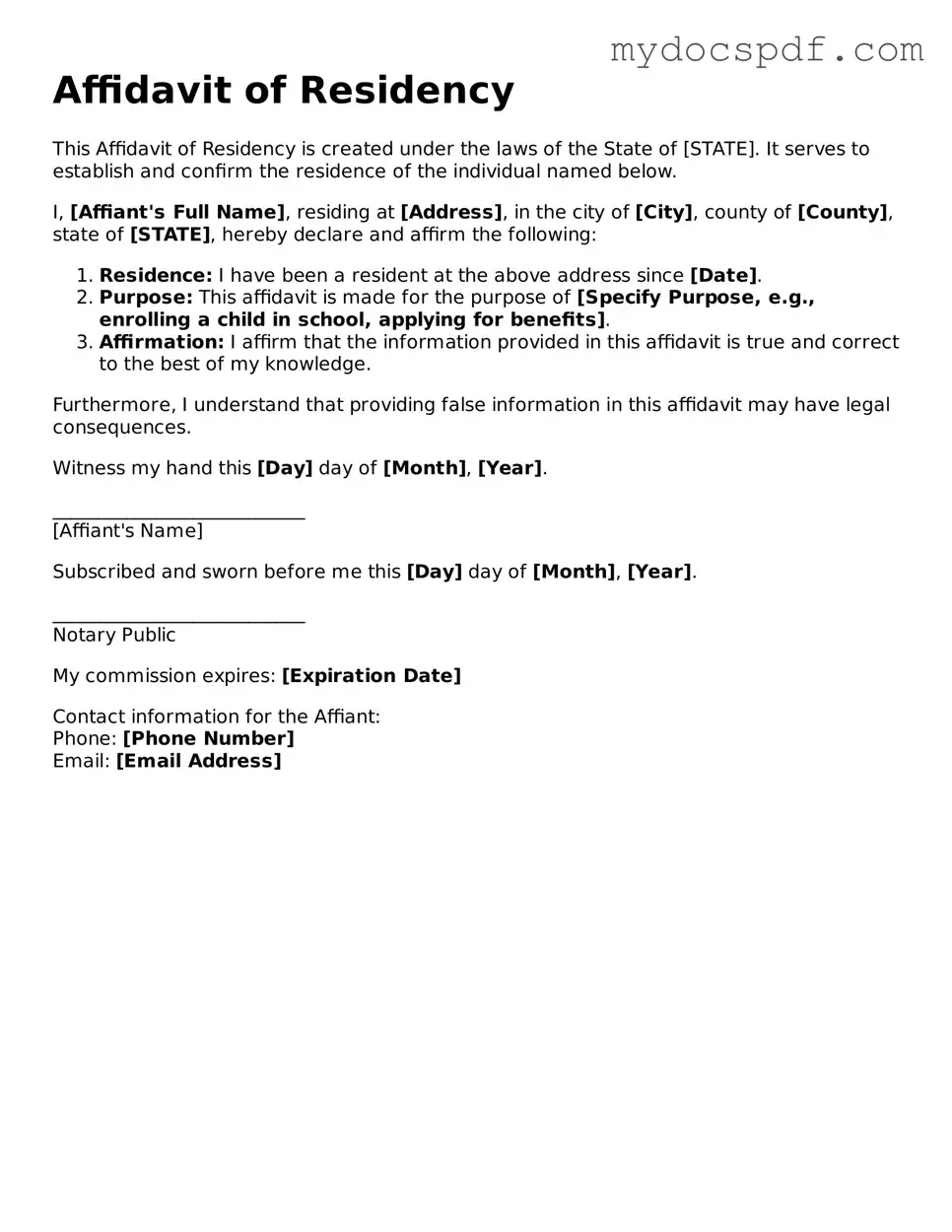Affidavit of Residency
This Affidavit of Residency is created under the laws of the State of [STATE]. It serves to establish and confirm the residence of the individual named below.
I, [Affiant's Full Name], residing at [Address], in the city of [City], county of [County], state of [STATE], hereby declare and affirm the following:
- Residence: I have been a resident at the above address since [Date].
- Purpose: This affidavit is made for the purpose of [Specify Purpose, e.g., enrolling a child in school, applying for benefits].
- Affirmation: I affirm that the information provided in this affidavit is true and correct to the best of my knowledge.
Furthermore, I understand that providing false information in this affidavit may have legal consequences.
Witness my hand this [Day] day of [Month], [Year].
___________________________
[Affiant's Name]
Subscribed and sworn before me this [Day] day of [Month], [Year].
___________________________
Notary Public
My commission expires: [Expiration Date]
Contact information for the Affiant:
Phone: [Phone Number]
Email: [Email Address]
